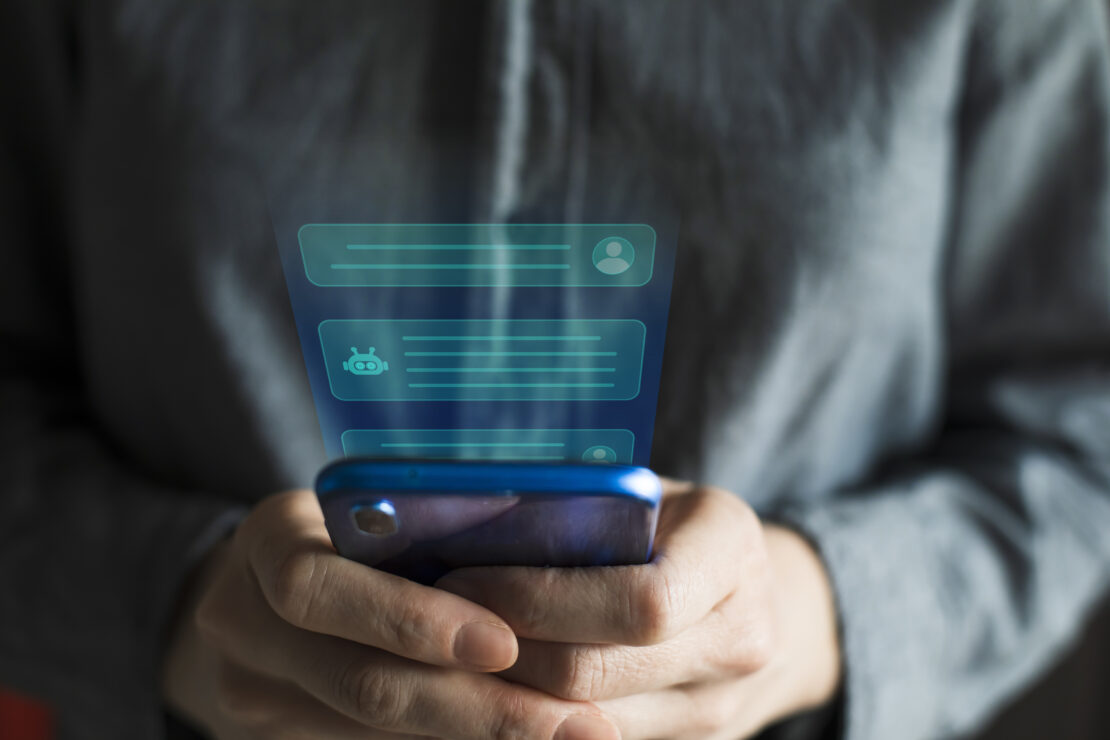Read Time: 10 minutes
Table of Contents
Introduction
Re-engaging former customers is one of the most cost-effective ways to boost revenue and grow brand loyalty. That’s where customer win-back campaigns come in: strategic, data-driven efforts designed to reignite interest and rebuild relationships. In this guide, we’ll break down what win-back campaigns are, why they matter, and exactly how to create and measure them for long-term success.
Key takeaways
- Customer win-back campaigns are a cost-effective retention strategy that helps re-engage inactive or churned customers by using personalized messaging, strategic timing, and compelling offers.
- Understanding why customers leave—such as price sensitivity, service issues, or competitor appeal—is crucial to tailoring your approach and delivering meaningful, customer-centric communication.
- Success depends on data-driven execution, including segmentation, omnichannel outreach, proactive feedback collection, and tracking key performance metrics like reactivation rates, ROI, and email engagement.
What are customer win-back campaigns?
Your customers are living, breathing humans, and your relationship should dynamically engage them to keep up with—and stay ahead of—their behavior. You can’t take any amount of attention or engagement for granted. Sometimes, customers leave. Accounts go inactive. Email lists decay by 25% every year, leaving businesses wondering why results don’t match prospects and leads. Now is the perfect time to re-evaluate your audience and re-charge your efforts to engage them. One crucial strategy is a win-back campaign.
A win-back campaign refers to the marketing efforts a company takes to re-engage inactive or churned customers, most often in the form of emails. According to Email Uplers, 45% of re-engagement email recipients read the follow-up emails, but only 24% of disengaged subscribers read the email. Connect with your audience through a powerful, targeted win-back campaign.
Not sure if retention efforts are worth the effort? It can cost up to 25x more for a business to acquire a new customer than it does to retain an old customer. Repeat customers spend up to 67% more than new customers, so it’s well worth your while immediately and in the long-run to invest in customer retention efforts.

Why do customers leave, and how can they be won back?
Communication is only effective when it’s based in understanding—both your audience and the actions you seek to change. Begin your win-back efforts by determining if the reasons for your customer churn include these common factors, and if you can apply relevant solutions to bring them back:
Price
Many customers will pay high prices for a product once, but doing it again requires higher motivation, dedication, and effort. Encourage engagement from price-conscious individuals by offering a discount code for their next purchase.
Poor service
Whether it’s in-store or through various communication channels, the ease and quality of a customer’s experience can make or break their relationship with your company. Make high-quality support a key foundation of your business model with dedicated agents, live support, and initiatives that proactively anticipate and resolve customer issues.
Product dissatisfaction
Insufficient or malfunctioning products and services tell your customers that your business fails to deliver on its promises. Challenge—and refute—that belief by constantly improving your offerings, implementing expert technical support, and seamlessly replacing broken products. Learn what features customers are looking for in a product by assessing feedback in regular surveys.
Competitor allure
Customers are doing the research to find the best solution for their needs. Are you? As an expert in your industry, you should also be evaluating your competitors, including their deals, prices, marketing campaigns, and stand-out features. But don’t fall into the trap of simply copying what works for another business. Ensure your prices remain competitive while reflecting your value. Build a community based on the values, culture, and goals you share with customers.
Psychology is vital to running a successful win-back campaign. Personalized, proactive approaches will connect with customers and demonstrate your commitment to providing a fulfilling experience they can’t receive anywhere else.
Want to scale your business?
Global Response has a long track record of success in outsourcing customer service and call center operations. See what our team can do for you!
When should you start a win-back campaign?
Tailoring your timeline to when customers use your products will ensure utmost efficiency. How long does your product last? When will customers need a refill or a replacement? Reaching out at these benchmarks in the process helps customers feel seen and valued as a partner to your business.
You should also establish regular periods of time based on activity to implement your strategy. Consider triggering the campaign one to three months after a customer’s last interaction.
To capture lost customers beyond that, consider the likelihood of engagement and how efforts will change according to each category of inactivity. Typically, customers inactive for three to six months is winnable, six to nine months is potentially winnable, and nine to 12 months is unlikely to be re-engaged. They could still be worth investing in, depending on business goals and resources.
How to create a win-back campaign
Now that you know your customers’ motivations and behaviors, it’s time to create your win-back campaign. Follow these steps and tips for a powerful campaign.
1. Identify inactive customers
In your CRM, identify customers who haven’t purchased an item, visited your website, participated in an event, or opened your emails in a month or three. Gather all activity information you can, including the frequency of previous purchases within a time period and how much their orders were to determine behaviors and strategies.
2. Understand their reasons for churning
Knowing why customers leave gives you actionable initiatives to communicate in your reactivation messaging. Demonstrate that you are capable of providing the solutions customers seek, and that you directly own customer pain points and successes.
3. Personalize your messaging
Genuine, user-friendly content encourages customers to come back to your business and apply your product or service to their own lives. Personalized messages establish dynamic relationships with your business and promise compassionate, attentive customer care.
Humanizing your company also communicates your values, shows customers how to use your products, and establishes you as an authority in your industry.
4. Create a compelling offer
A win-back campaign is the time to give your customers an offer they can’t refuse! Capture their attention with an offer that is not only flashy but that promises your value and reminds customers of why they love your product.
5. Choose the right medium at the right time
Most win-back campaigns use emails to connect with customers, but your business should tailor your outreach efforts to where customers engage with you the most. Social media, text, and chat are vital tools that directly reach customers and seamlessly connect them to your website for fresh engagement.
The role of data in win-back success
Understanding what your customer wants and expects from your company will put you ahead of the game. Capture customer insights in omnichannel sentiment tracking. Gather feedback about the performance of your support agents and about all other matters such as business initiatives or products to address the issues that cause customers to leave.
AI call center technologies track customer sentiments, accumulating them into data so you can identify pressing issues and customer-specific trends. This strategy ensures you’re always proactively solving problems and driving your business toward success, which will only attract customers and promise positive results when they come back.
Segmenting your customer win-back campaign email list
Sending the same win-back email to your entire list of churned customers isn’t an effective use of your time or efforts. Tailor solutions to specific problem points. Segment, or divide, customers into categories by urgency, value, or risk.
Avoid over-discounting by reserving higher discounts for people who spent more money on products or services in the past. You should also test higher and lower discounts for customers vs. non-customers to determine what solutions bring the highest impact.
At-risk customers might require specific, more sensitive communication. Minimize the risk of churn for customers that haven’t left but are on the brink of making that decision.
Whatever your course of action, build a communications flow in your CRM to be triggered by a certain action or customer type. Send the email at a specific time of day. You don’t want to spend all this time and energy targeting your efforts only for the email to appear in an inbox when the customer won’t notice it!
How to measure the success of your win-back campaign
Pay close attention to the results of your win-back campaigns, and don’t be afraid to make adjustments based on the data. Take these steps to meaningfully evaluate results.
1. Adopt a customer-first mindset
After so much effort tailoring an effective win-back campaign, it can be frustrating when you don’t immediately see results. Never fear! Put your customers first. Adapt your communications to match their perspectives. Walk yourself through the customer journey to grasp what they’re going through and to get a feel for how your win-back campaign may come across, tonally, to a churned customer.
2. Be proactive
Retention requires a proactive mindset. Set clear goals for each segment of customers you aim to revive and the corresponding initiatives. Consult the experts. Implement cutting-edge contact center tracking technology to capture accurate voice of the customer feedback. Familiarize yourself with customer acquisition and retention best practices to develop strong relationships with customers.
3. Regularly ask for feedback
Regularly asking for feedback ensures you’re capturing valuable insights when they mean the most—as they’re fresh on the customer’s mind, before they’re forgotten. At the end of each interaction, ask customers how they feel about the support they received. Sending out more in-depth surveys as part of your win-back campaign can also ensure they receive the care they look for as they return to your business.
4. Collect and monitor data
Evaluate the data. Track KPIs relevant to your business and industry. While some businesses may rely on product sales, others may focus on appointment setting and show rates. Whatever the case, track success by these data points to measure performance and effectiveness.
- Email engagement: Track when customers open emails and how often they click through material to return to your website to determine if your message resonated with the audience in the way you chose to do it.
- Conversion rates: This measures the percentage of customers who completed the intended action (for example, made a purchase) as a result of the communication.
- Reactivation rates: This is the percentage of dormant customers who re-engage with your business after receiving win-back communications. This tells you how effectively the campaign revived interest and moved customers to give you their business again.
- Return on investment (ROI): The ultimate goal, revenue generated directly tells you how profitable the campaign was and how much further reactivation efforts can drive business success in the future. Measure the cost of the win-back campaign against the number of reactivated customers to determine cost-effectiveness. Calculate the lifetime value increase of reactivated customers by comparing average spend of these customers post-campaign with their historical values.
Each metric is a valuable mark of success and can inform all your efforts.

Benefits of customer win-back campaigns
Win-back campaigns demand intentional, targeted customer care efforts, but they will prove invaluable to your business. Implement them into your business practices to enjoy these benefits.
Reduced cost compared to customer acquisition
Acquiring new customers requires significantly more costs and marketing efforts than it takes to retain customers who already know about and have engaged with your business. It takes less to remind churned customers why they came to you than it does to convince strangers to take a risk on you. Minimize costs while underscoring your reputation as a business that values its customers.
Enhanced customer lifetime value (CLV)
This metric measures the total revenue, or profit, generated by a customer throughout their relationship with the brand. If your customers are in it for the long haul—and if you are, too—CLV helps you understand the long-term value of your customers as well as your marketing efforts and other strategies to reduce churn.
Set your business up for long-term success by implementing loyalty and rewards programs that ensure customers have a strong standing with your business.
Improved brand reputation and loyalty
Customers will respond to your genuine efforts to engage with them, not only financially but as an established presence and resource in the industry. Winning back customers is a significant accomplishment, not only in terms of metrics but also in the eyes of the customers that may have had doubts or forgotten about your company. Increase brand loyalty by putting your money where your mouth is and demonstrating your commitment to customer success.
Examples and templates of win-back campaigns
Learn from the best! Determine familiar, high-performing ways to reactivate customers by applying these examples to your win-back segments.
1. “It’s been a while” emails
These emails remind customers of their business with your company, prompting them to renew purchases or to remember what they love best about your product. A simple head’s-up can generate revenue, so save the discount codes for higher-value customers. We enjoy these communications from Grammarly and Typeform.
Get inspired, and then follow this template:
Subject Line: We’ve Missed You!
Header (Optional Image Banner or Bold Text):
It’s Been a While… Let’s Catch Up
Body:
Hi [First Name],
It’s been a little quiet on your end, and we just wanted to say we miss you!
We’ve been busy making [your brand/product/service] better than ever—new updates, fresh content, and more ways to [benefit your product offers]. If it’s been a while since your last visit, you might be surprised by what’s new.
Whenever you’re ready, we’d love to have you back.
[Button: See What’s New]
Thanks for being part of our journey. We hope to see you soon.
Warmly,
[Your Brand Name]
[Customer Support Info | Unsubscribe Link]
2. Seasonal campaigns
Seasonal campaigns encourage customers to keep up with the latest trends and intentionally look to your business and products as a must-have for the season—all without coming across as you’re begging the customer to come back! Perfect for companies that experience lulls and surges in demand, this template can jump-start your seasonal win-back communications:
Subject Line: [Season] is Here—So Are We
Header: New Season. New You. Same Great [Brand].
Body:
Hi [First Name],
The season’s changing—and so are we.
As we step into [Season], we’ve freshened things up with new [products/services/content], seasonal favorites, and a few surprises we think you’ll love.
Now is the perfect time to rediscover what [Your Brand] has to offer this season.
[Button: See What’s New]
Here’s to fresh starts and new routines. We’d love to be part of yours.
—
[Your Brand Name]
[Customer Support Info | Preferences | Unsubscribe]
3. Incentive emails
Tried and true, discount codes prompt customers to replicate their business habits with your company and as a result, they are perfect for high-spenders or customers at risk for churn. Follow this template to offer that coveted discount code:
Subject Line: Come Back & Save 20%
Header: We’d Love to Have You Back
Body:
Hi [First Name],
It’s been a little while since we last saw you, and we’ve missed you!
To welcome you back, here’s 20% off your next order. Just use code WELCOME20 at checkout.
Whether you’re ready to jump back in or just browsing, we wanted to say thanks for being part of our community.
Use Code: WELCOME20
Expires in 5 days!
[Button: Redeem My 20% Off]
In the meantime, we’ve added some exciting new [products/features/offers] we think you’ll love.
Why not take a look?
See you soon,
[Your Brand Name]
[Customer Support Info | Preferences | Unsubscribe]
Be sure to adapt your messages for SMS messaging and to provide a follow-up reminder before the discount expires.




